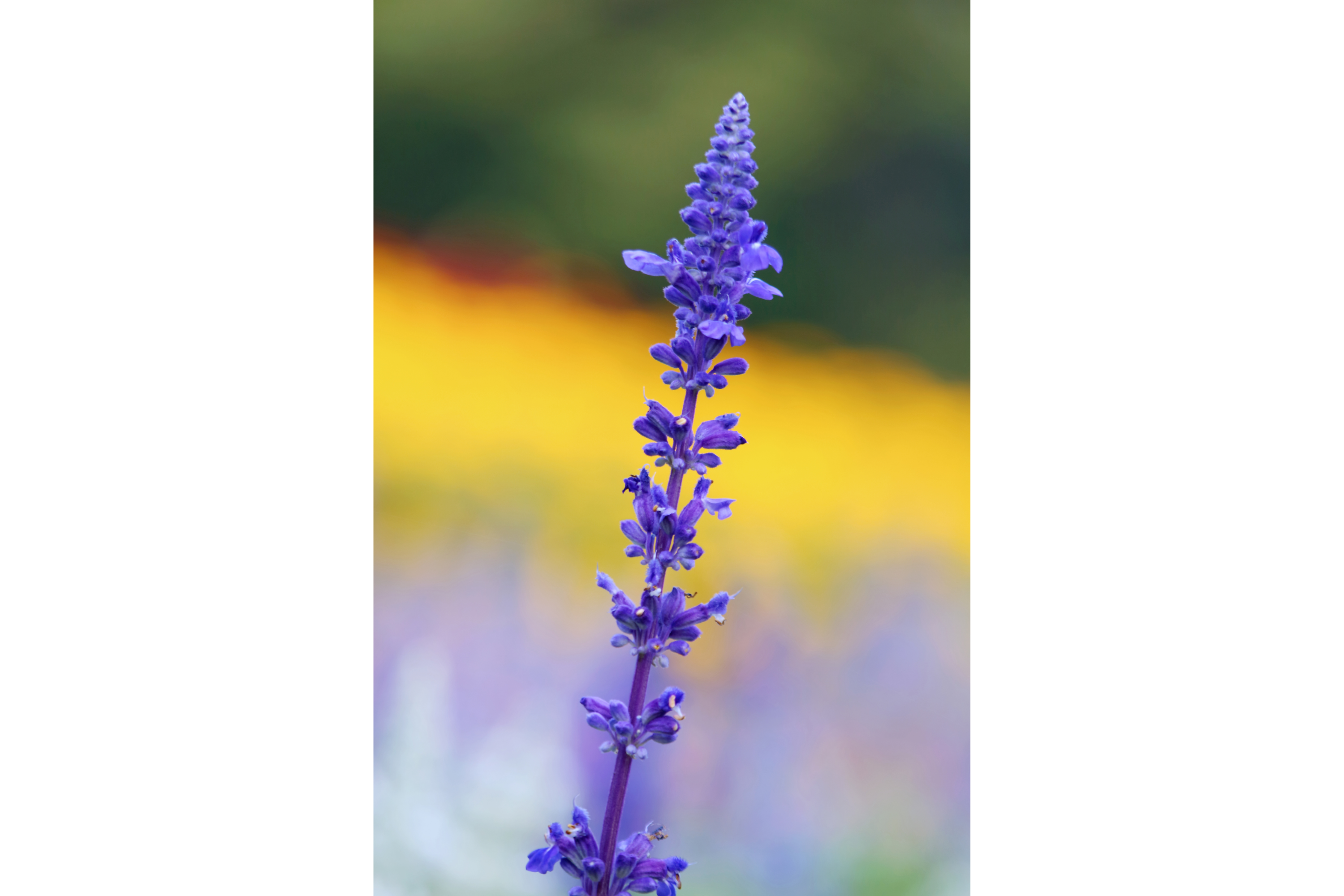Hoary sage
(Salvia canescens daghestanica)

Description
Salvia canescens, the hoary sage, is a herbaceous perennial that is endemic to the Caucasus mountains. The specific epithet, canescens, refers to the off-white hairs covering the leaves. Salvia canescens was first described in 1831 by the Russian botanist Carl Anton von Meyer. The English botanist George Bentham applied the same name to a different species, which he corrected in his 1833 volume of Labiatarum Genera et Species by applying S. canescens Benth. as a synonym of Salvia pallida. In 1992, the Russian botanist Y. L. Menitsky reduced the species Salvia daghestanica, originally described in 1951 by Dmitrii Ivanovich Sosnowsky, to a variety of S. canescens, thus also requiring the autonym S. canescens var. canescens. Salvia canescens var. daghestanica reaches nearly 1 ft (0.30 m) tall and wide, forming a mound with snow-white 1 to 4 in (2.5 to 10.2 cm) leaves that are covered with white hairs on top and bottom. It has royal purple flowers growing in whorls that bloom in summer and again in autumn, reaching just over 0.5 in (1.3 cm) long with a small calyx. Inflorescences grow to 1 ft (0.30 m) long, holding the flowers above the foliage. Salvia is the largest genus of plants in the sage family Lamiaceae, with nearly 1000 species of shrubs, herbaceous perennials, and annuals. Within the Lamiaceae, Salvia is part of the tribe Mentheae within the subfamily Nepetoideae. One of several genera commonly referred to as sage, it includes two widely used herbs, Salvia officinalis (common sage, or just "sage") and Salvia rosmarinus (rosemary, formerly Rosmarinus officinalis). The genus is distributed throughout the Old World and the Americas (over 900 total species), with three distinct regions of diversity: Central America and South America (approximately 600 species); Central Asia and the Mediterranean (250 species); Eastern Asia (90 species). The name Salvia derives from Latin salvia (sage), from salvus (safe, secure, healthy), an adjective related to salūs (health, well-being, prosperity or salvation), and salvēre (to feel healthy, to heal). Pliny the Elder was the first author known to describe a plant called "Salvia" by the Romans, likely describing the type species for the genus Salvia, Salvia officinalis.
Taxonomic tree:







